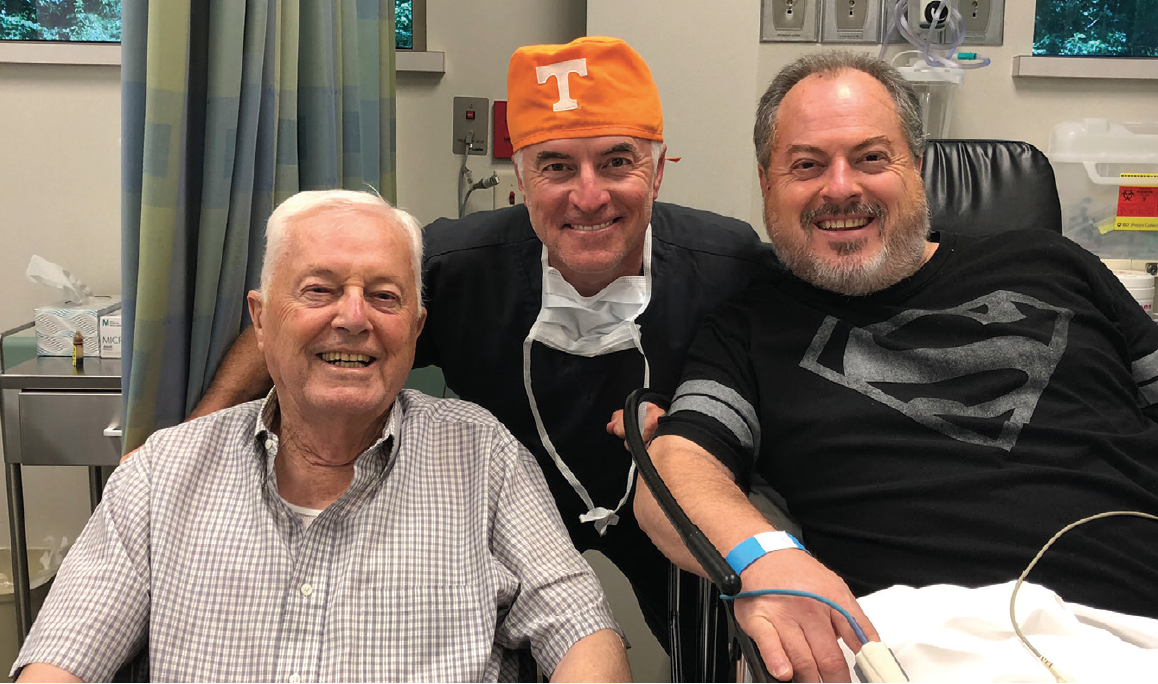
A doctor I knew many years ago used to have a saying: “Never deprive your family members of the very best in medical care simply because you’re related to them.” I’ve really taken that doctor’s advice to heart. I’ve always been open to operating on my family members. I know to some people that may sound arrogant—there are plenty of good doctors out there, after all. That may be so, but, in my view, nobody’s going to take care of my family like I will.
I understand the ethical issues surrounding operating on family members, especially when access to narcotics is involved. The topic is nuanced. Those who object to operating on a family member might simultaneously accept doing a general eye examination on a family member. I don’t know of a single ophthalmologist who wouldn’t do a routine refractive eye examination on family. They may be out there, and that’s fine. But for me, it’s a continuum.
When it comes down to it, every doctor has to make their own decision. If a member of my family required any eye surgery that was not routine—a procedure that I haven’t done tens of thousands of times before—it might be different. But for routine surgeries, I have no qualms about operating on members of family. To be honest, I’m not sure that any member of my family would have it any other way.
The first person I ever performed radial keratotomy on, back in 1991, was my wife at the time. I’ve done either PRK or LASIK on all three of my children. And, as I will discuss in further detail herein, I performed cataract surgery on both my brother and father on the same day (Figure).

Figure. Dr. Patterson with his father and brother on the day of their surgeries.
One Day, Two Family Members, Four Cataracts
My brother lives in Florida, my father lives in Texas, and I am in Tennessee. It just worked out that I could schedule to operate on both of them on the same day. They were both available for surgery, and other family members were available to take care of them postoperatively.
Although he is about 10 years younger than I, my brother developed a progressive posterior subcapsular and white cortical cataract in his right eye at age 49—coincidentally, the same age at which our mother developed her first cataract. He went from 20/30 VA to counting fingers in his right eye over the course of about 6 months. He had a milder cataract in his left eye.
My father was 84 years old—he’s 86 now—when I performed his cataract surgery. His age-related cataracts had been growing slowly for years, and they weren’t the worst cataracts in the world. They were, however, bad enough to affect his daily life. I ultimately decided to remove them because he was also in the beginning stages of Alzheimer disease, and it was beginning to affect him. I knew losing his vision on top of his cognitive ability would compound his challenges. I figured, we can’t fix the neurologic disease, but we can fix the vision.
For both, I did same-day bilateral cataract surgery. I don’t routinely do this, simply because of reimbursement issues, but they were not a factor here. I treated them the same as I do people who don’t have insurance and are paying out of pocket—I always give such patients the option of having both eyes operated on the same day—and both my brother and father had no problem with it.
I operated on my father first; right eye, then left, and then on my brother; right eye, then left. I had done surgery that morning, and my first four cases of the afternoon were my father and my brother’s eyes. It was a pretty unique situation. I used all the same protocols I would for any other patient, and all four of their surgeries went perfectly, despite the challenge of my brother’s very dense cataract. That one was so bad that I even had to use trypan blue dye.
I implanted monofocal IOLs (Bausch + Lomb) in my father because he had gotten to the point with both age and his Alzheimer disease where he really wasn’t reading at all anymore. I saw no reason to increase his risk of glare, halo, and contrast problems associated with multifocal IOLs if he wouldn’t be able to fully appreciate their benefits.
For my brother, I implanted Tecnis Symfony extended depth of focus IOLs (Johnson & Johnson Vision) bilaterally—I’ve since changed my routine to implanting a Tecnis Symfony IOL in one eye and a multifocal IOL in the other. He has been extremely satisfied with his outcome. For the most part, he is spectacle independent, except for reading extremely small print.
The Bottom Line
Operating on family members is just like anything else—as long as you have good results, you’re going to keep doing it because you have positive reinforcement. “What if you’d had a complication?” is a legitimate question. My response is that it would have been tough, I can’t say that it wouldn’t be. However, we know that there’s risk with every surgery, and the fact that the person in your OR is a family member doesn’t change that.
I still hold that if I were going to do surgery, and knew ahead of time that complications were possible, I would nevertheless rather be the one to take care of that operation. I just don’t think any other surgeon would offer the depth of care and detail operating on my family member that I would. You can treat everyone with 100% the best of care, but there’s still something a little special when you have a family member coming through. You just can’t help but go that extra mile in making sure everything’s perfect.




